
To the place where "good design" was created
Good design, excellent design, design that opens up the future, ideas that move people's hearts, and actions that lead society always have small beginnings.
Interviews with designers at the birthplaces of good design to find hints for the next design.
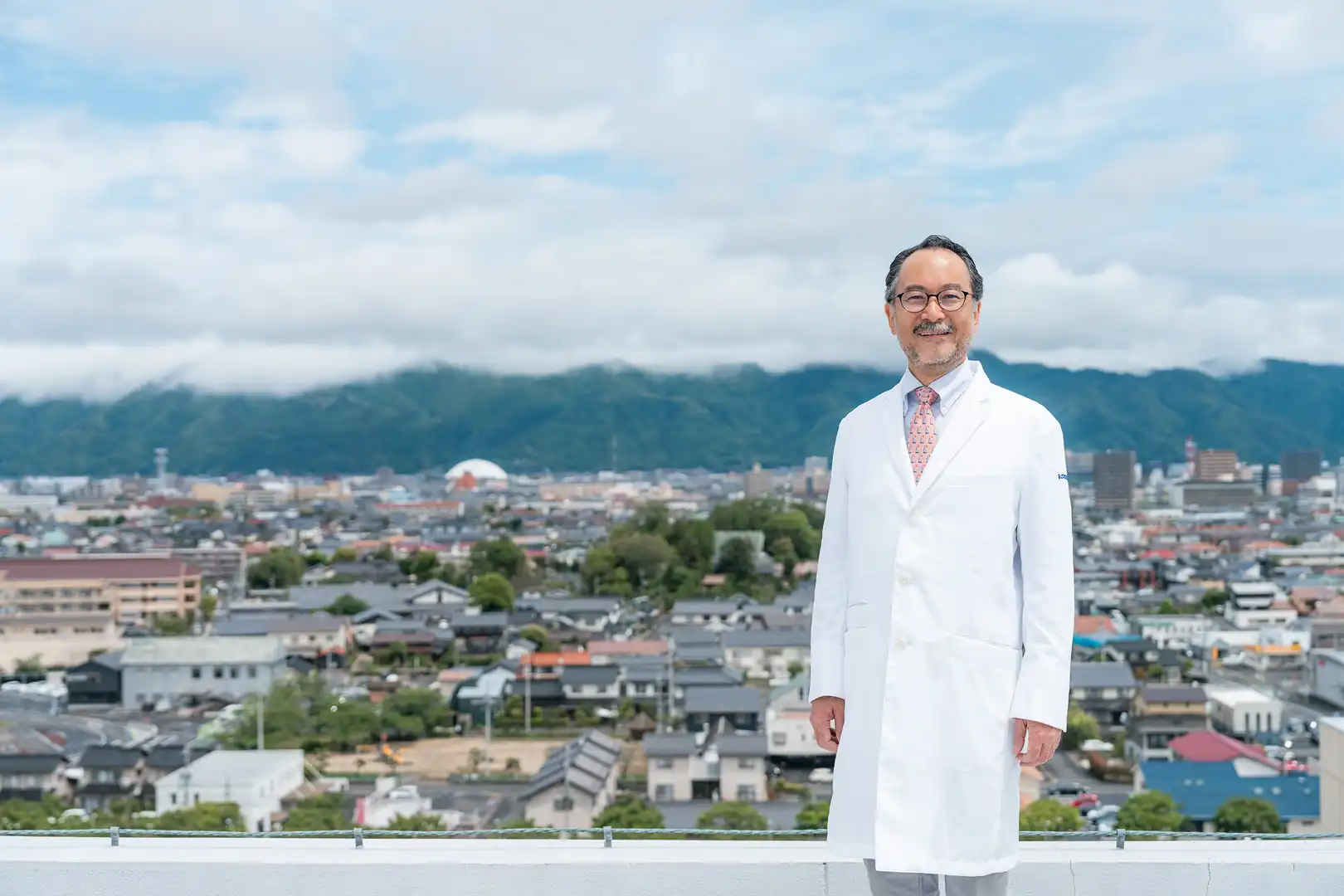
Destination
Shimane General Medicine Center
Changing society through networks (Part 1)
2023.06.15
This time, we visited Shimane General Medicine Center, a winner of the 2022 GOOD DESIGN GOLD AWARD. “NEURAL GP network,” a project to train GPs (general practitioners) conducted by this center, is a virtual office that connects doctors working in rural areas such as mountainous regions or remote islands and universities in order to provide mutual support and research in comprehensive medical care. The center is working hard to change the future from Shimane by providing local residents with reliable medical care. Yoshihiko Shiraishi, the director of the center, told its story.
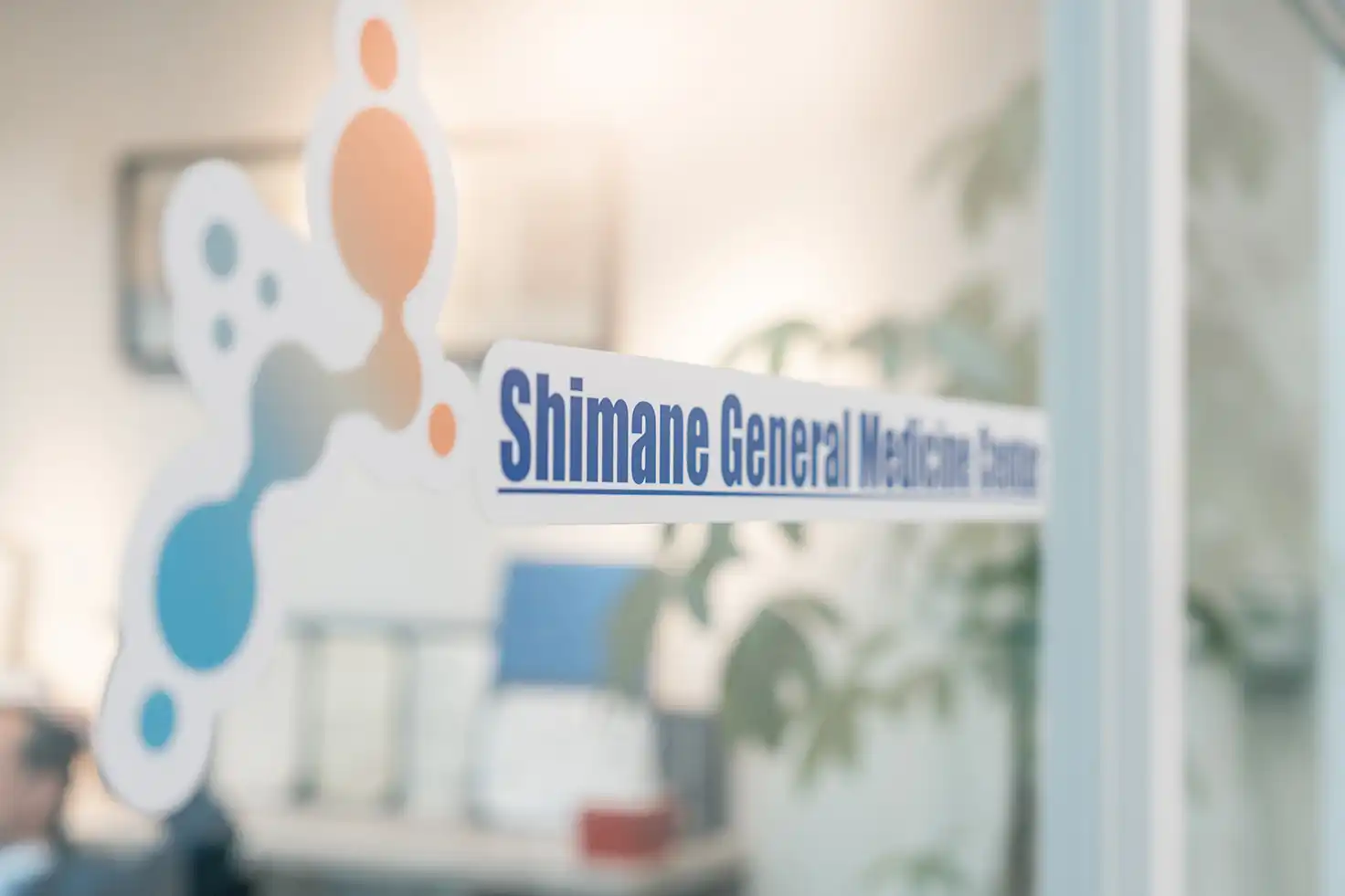
Enjoyment is a prerequisite for a leader
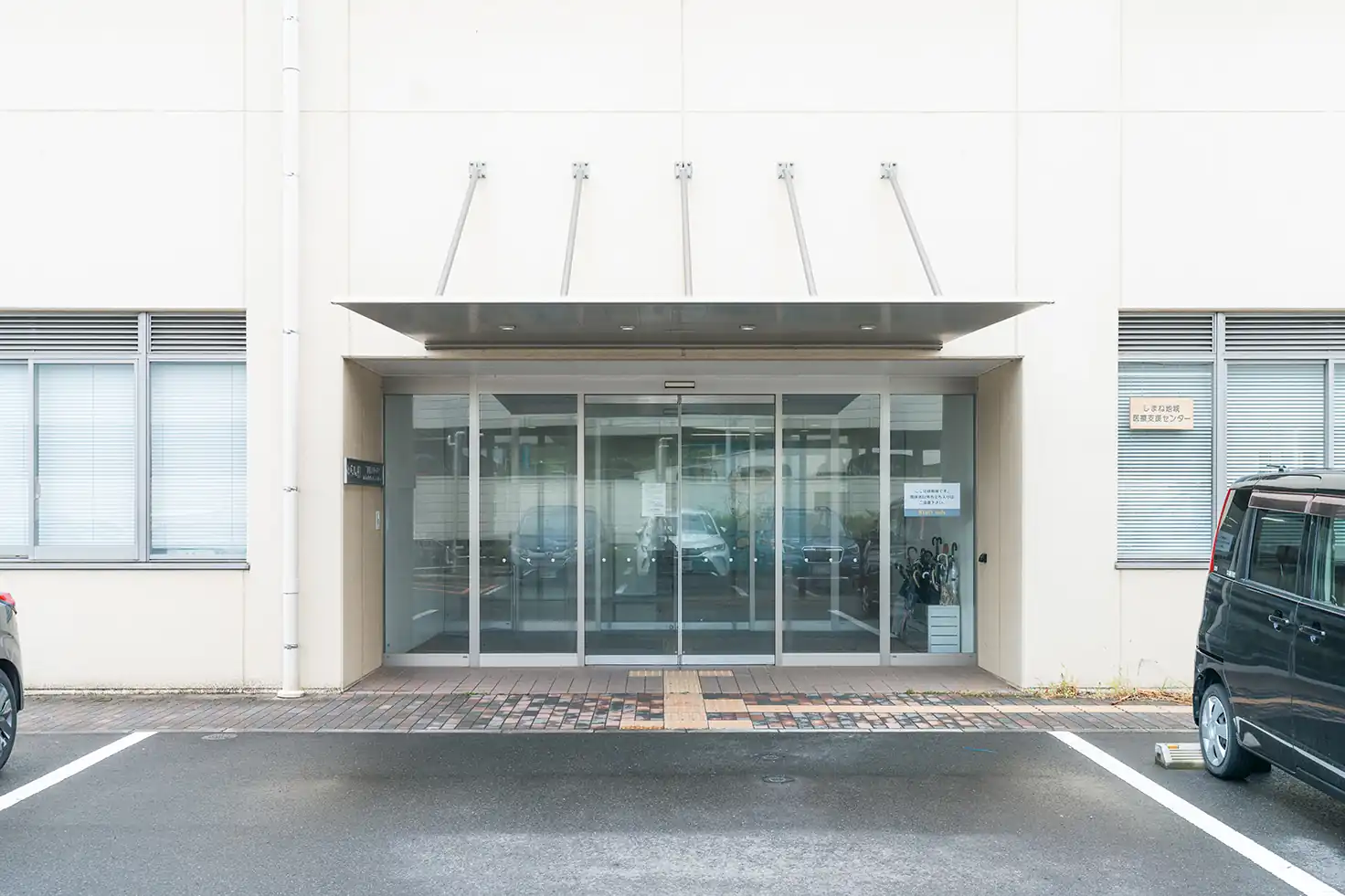
- The GOOD DESIGN AWARD is open to any forms, tangible or intangible. The “NEURAL GP network” managed by the Shimane General Medicine Center is a networked, intangible virtual medical office.
Yoshihiko Shiraishi We started this project with the purpose of connecting hospitals, universities, and administrative bodies in the area to train skillful GPs and reinforce the medical care of the entire Shimane. The name “NEURAL GP network” expresses the vision aimed at by our network where GPs can connect with each other, just like nerve cells do, beyond hospital boundaries and improve together complementarily.
- It was impressive to see how enthusiastically the doctors and students on the website worked on medical care challenges. It is you, Director Shiraishi, who creates that atmosphere.
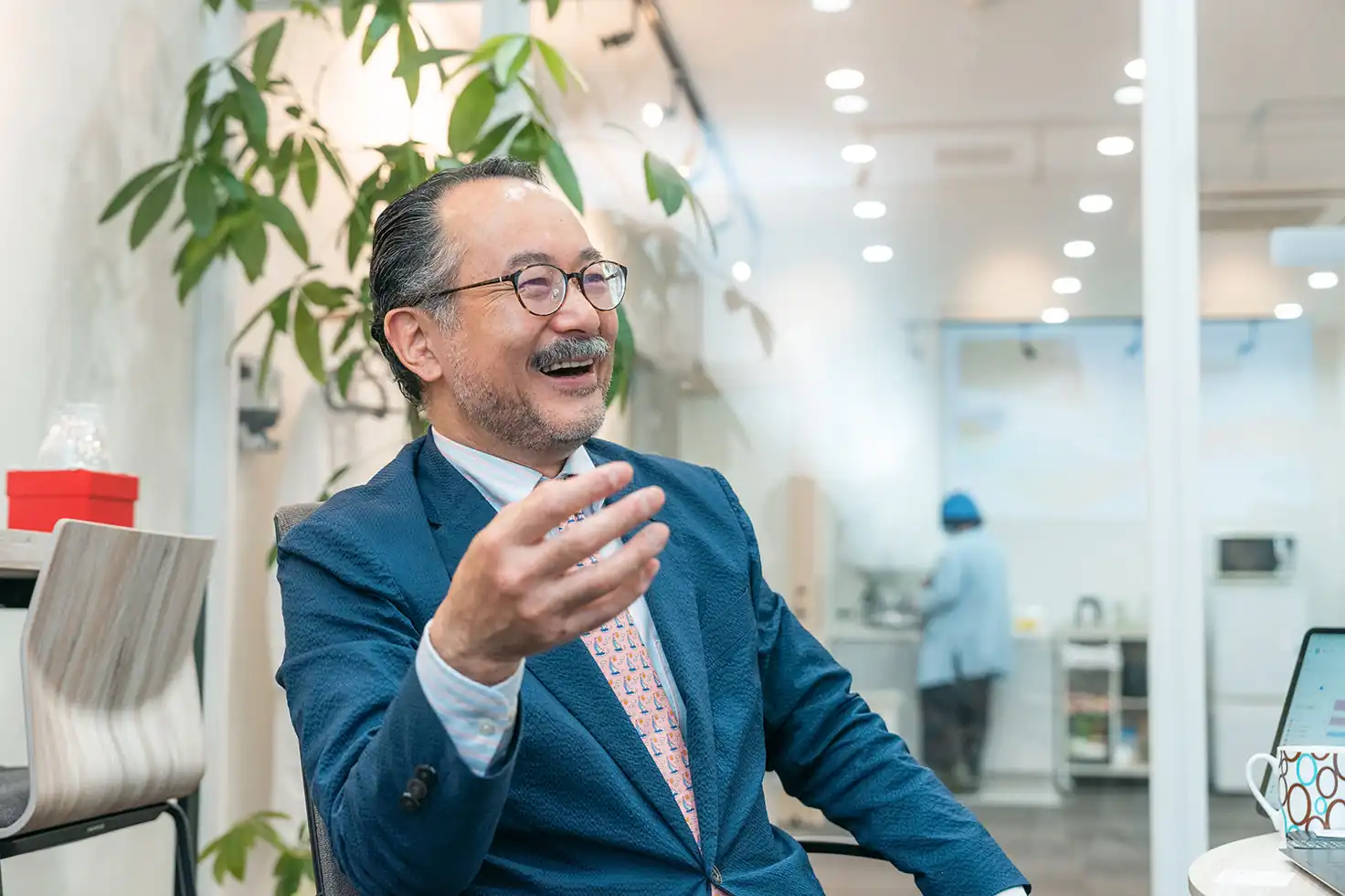
Shiraishi Yes, I think it has to be enjoyable. There are many requirements that a leader must meet, but among them, he/she has to have the most passion for the mission and enjoy it. People wouldn’t gather at a place that doesn’t look fun.
Doctors exerting their abilities in rural areas
- Please tell us how you started working in community health care.
Shiraishi In 1998, after graduating from Jichi Medical University, I was transferred to the Oki Dozen clinic in Nishinoshima Island, the Oki Islands. Two and a half hours from the mainland by ferry, the island is a historic location where Emperor Go-Daigo and the retired Emperor Go-Toba were exiled to. But there had been only few doctors who wished to come here to work back then. Therefore, doctors were sent from the university hospital in one-year shifts.
But I chose to live in Oki to have a happy life here. That is because I can enjoy sailing and fishing in the wonderful nature, people are kind, and more than anything, the work is fulfilling.
- So, you broke out of the traditional one-year shifts and headed there to settle in to fully engage with local community health care.
Shiraishi In remote regions, there is always a physician shortage. Doctors have to cover all fields including pediatrics, internal medicine, cardiology, and surgery. I believed that there was a demand for doctors, and doctors could experience a variety of clinical cases, and therefore my days there would be challenging and fulfilling, as demand and supply meet perfectly.
I became the director at the age of 34, and since then, I have been working hard to build comfortable working environments for nurses and doctors so that they can settle in Oki and we can have more workers, by cooperating and sharing roles with other clinics.
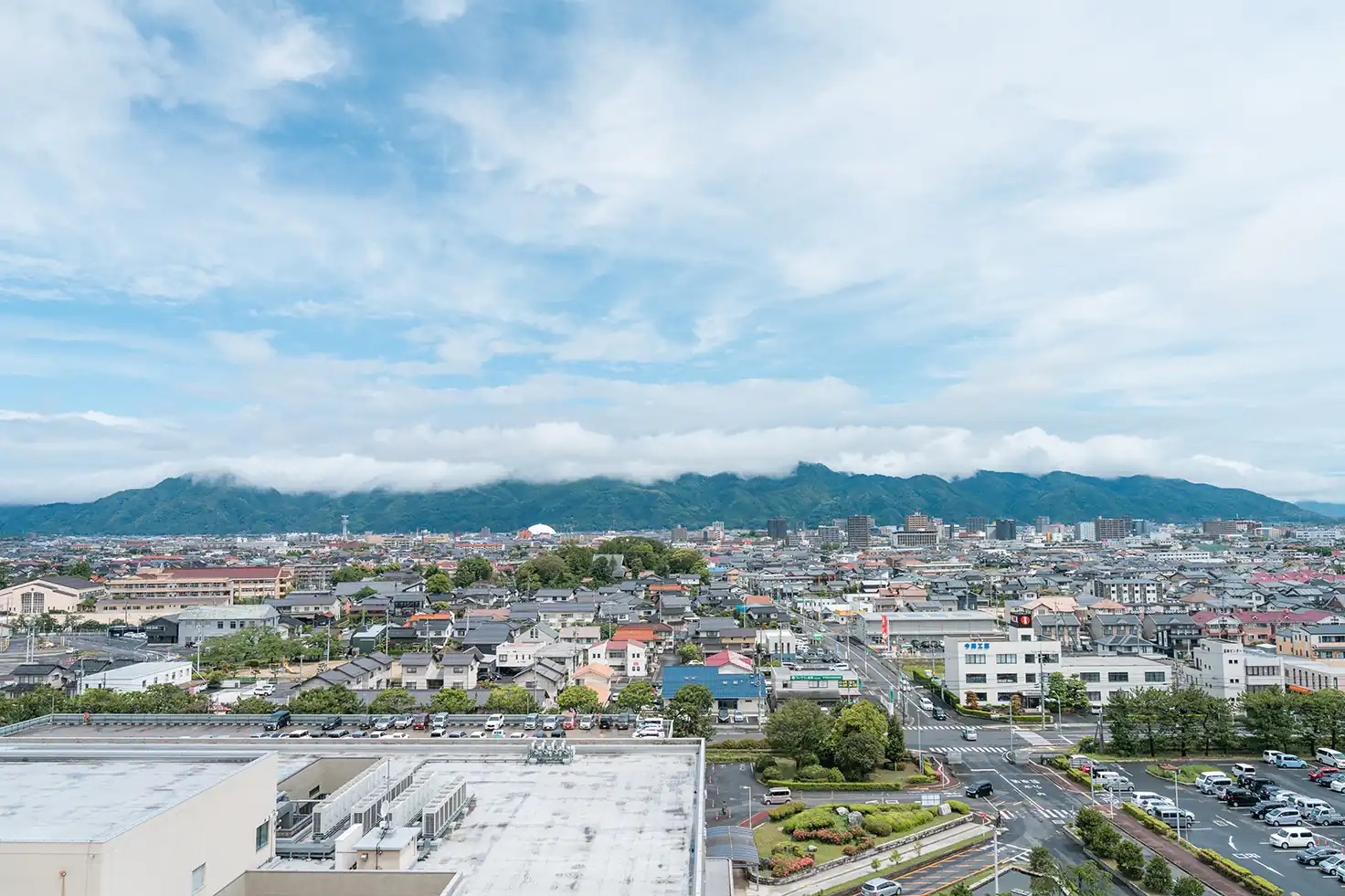
What is a GP?
- Local community doctors are often depicted as some kind of heroes in dramas.
Shiraishi We have all kinds of patients in children, adults and the elderly saying, for example, “Please do something to ease this pain,” and a GP is the first person who gives primary care to them. I imagine that there are super-doctors in reality, but we don’t have to be superhumans.
The important thing is to examine everyone who comes in. Any diseases. GPs are required to investigate, consult co-working doctors or other doctors outside their clinics, or transfer a patient to an appropriate specialist if they find unfamiliar symptoms.
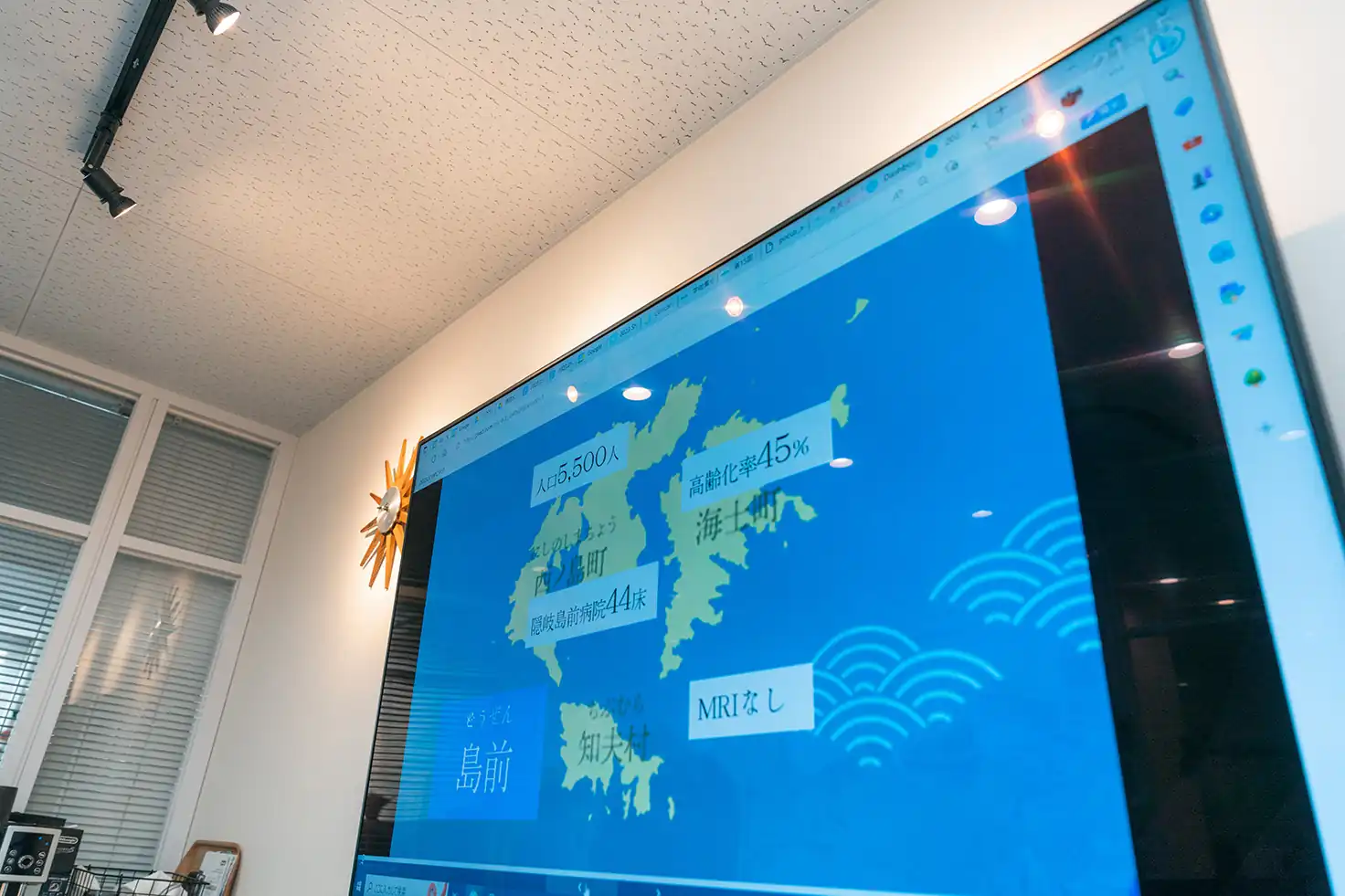
- GPs are new specialists in Japan. I imagine many people are not familiar with them yet. What do they do?
Shiraishi The majority of patients visit hospitals with 30 to 40 common diseases. GPs are trained to examine these common diseases from a broad and diverse perspective. In the past, family doctors and general internists would take this role.
Advances in medical treatment has induced medical specialization. In university hospitals, there are many specialties such as “endocrine system” and “beta cells of the pancreas.” It was considered difficult to learn general practice in a specialized university curriculum and it has to be learned on site. However, the training of GPs wasn’t going smoothly.
- It is expected that the demand for GPs will increase in a super-aging society.
Shiraishi In modern times, living with diseases is common. Sixty percent of people live out their lives with chronic diseases. Elderly people are more likely to have multiple diseases, and therefore, it is more efficient if GPs examine patients with a broad perspective, then send them to specialists as needed.
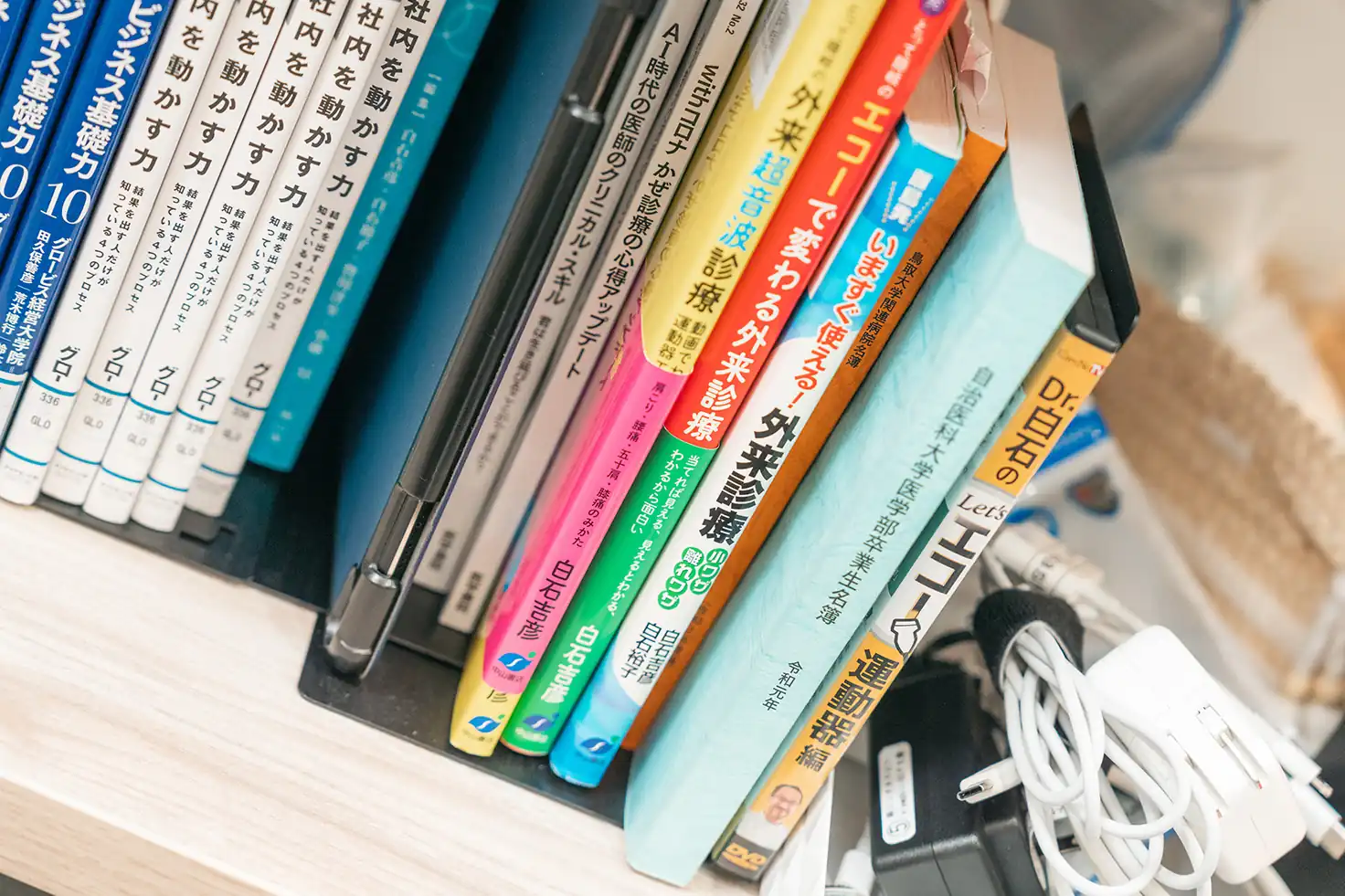
Shiraishi The government has also been implementing measures to address issues relating to the aging society. Positioning GP as the 19th specialist is part of the measures. Also, the Ministry of Health, Labour and Welfare (MHLW) launched the “project for training of physicians with comprehensive medical care capabilities.” In FY2020, six universities including Shimane University applied for this project, and general medicine centers were opened across the country. In 2023, the number of participating universities increased to eight.
Presently, you work 3 days a week as the director of Oki Dozen Hospital and 2 days as the director of Shimane General Medicine Center.
Shiraishi Normally, it would be assumed that I would quit the position at Dozen Hospital and commit fully to the position of new director of this center. I was even told that I could have a fancy office furniture here. But if I work full-time at the university hospital, I would lose my connection with the community. Also, that would isolate this place and make this center excluded.
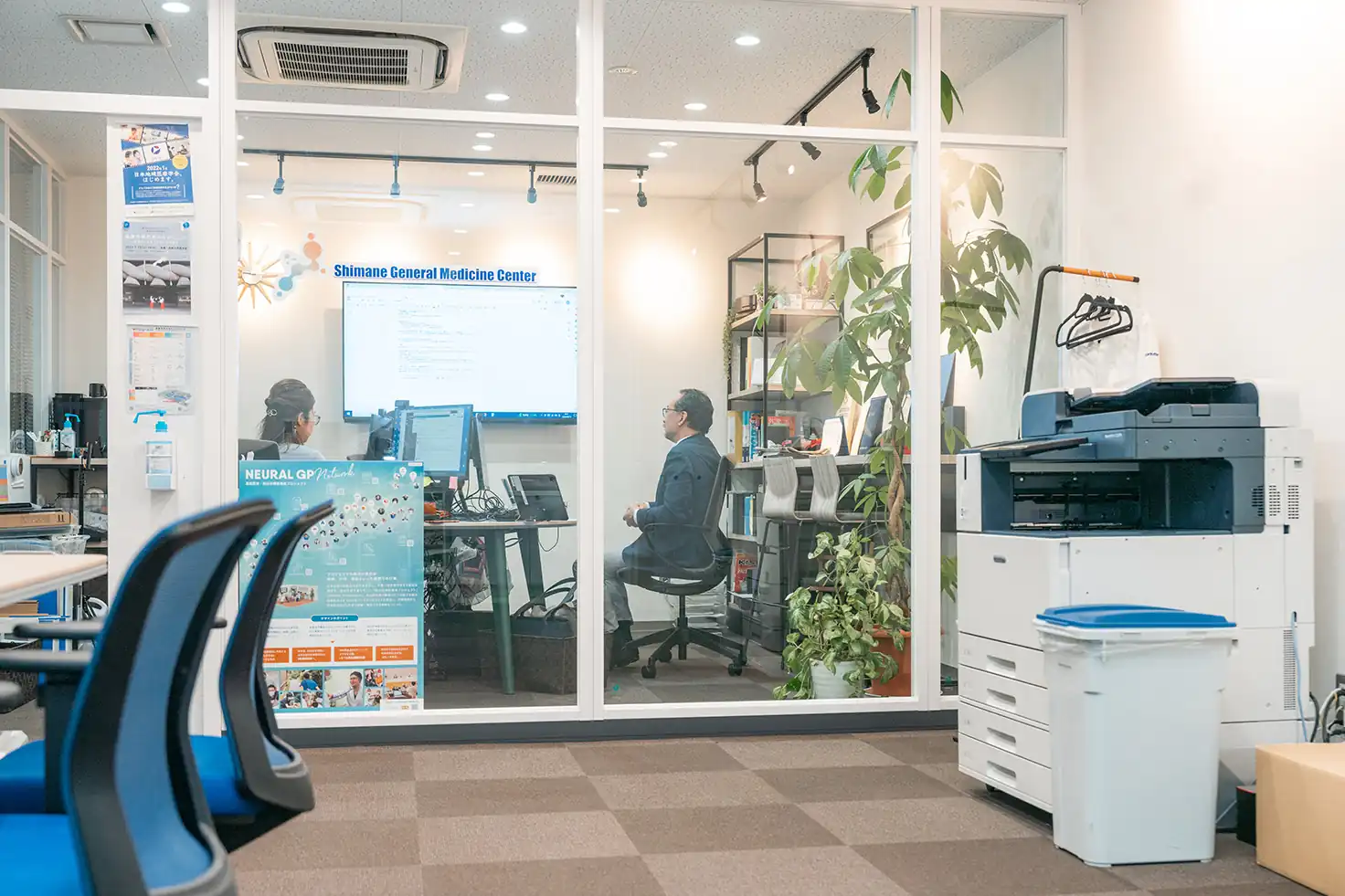
A desire to change society
- The medicine center was opened through the GP training project by the MHLW, but why did you launch the virtual office on top of that?
Shiraishi This network office was opened for the purpose of a pilot study (experimental research) in order to increase the number of GPs. While I was living in Oki, I felt that something devastating was happening to our society and thought I had to do something about it. Especially, the aging population issue has imposed a significant strain on society.
The elderly population of Oki has nearly reached 50%. At this rate, the majority of private-practice doctors in the local community will retire due to old age. We are facing a reality in which our health system will not function without GPs. Tokyo is no exception. The same is expected to happen to Tokyo in 30 years time.
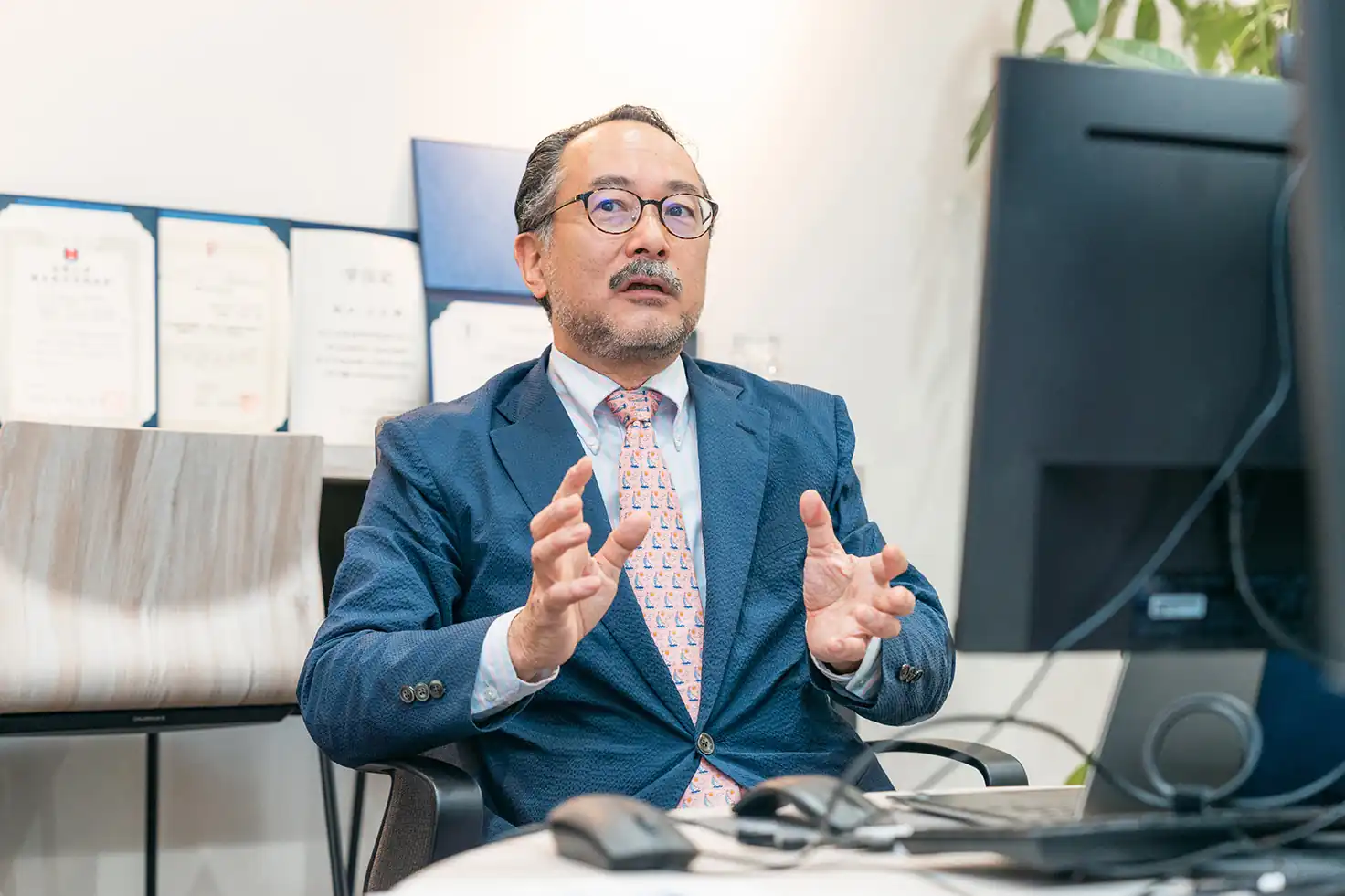
Shiraishi Our mission is to produce skillful GPs in Shimane. In 2010, the regional quota system of medical schools was introduced, which requires graduates to work as physicians in specific regions or clinical departments. This is a Japanese government-implemented framework that provides student loans to applicants, and if they practice in designated regions as physicians for a certain period after graduation, they will be exempt from repayment.
When the regional quota was established, the university invited local doctors as professors to serve as a catalyst, but the number of students aspiring to become GPs hardly increased. They were excellent teachers and they might have been able to perform 50% more than ordinary people but could never do the work of 10 people. Frankly speaking, about 10 times the work of one person would be needed to turn this tight situation around. For this reason, if I were working full-time at the university, I would not be able to make a difference in society.
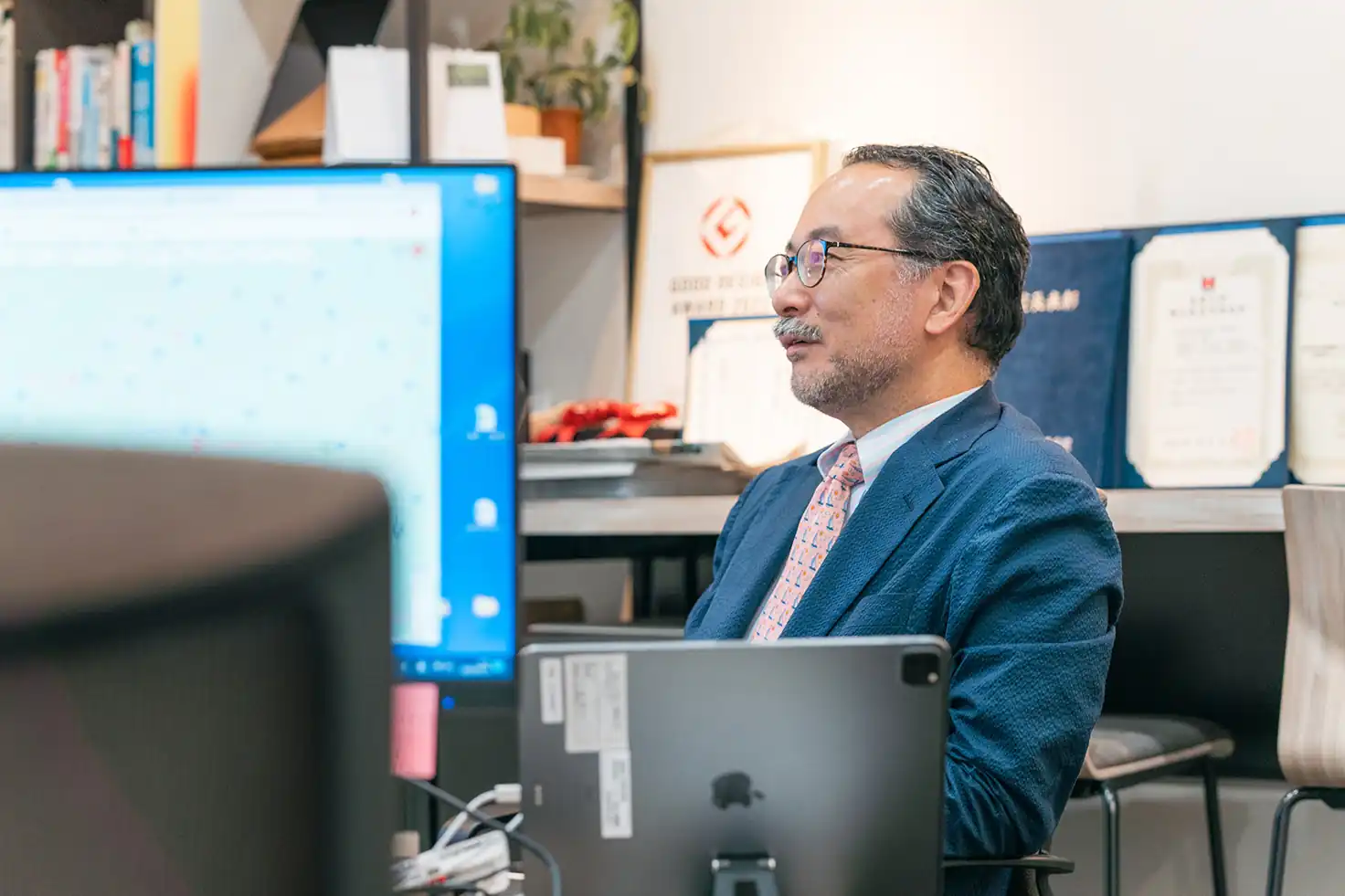
Determined not to force myself
Shiraishi I shouldn’t force myself to handle everything on my own. Instead, I can build a system that involves local doctors and draws in as many students as possible. That was my thinking. This cannot be achieved without people who work with you. In fact, I am able to work as the director of this center while based in Oki thanks to the support from my fellow doctors.
- You mean, managing it on your own is one thing, but that won’t lead to the next generation.
Shiraishi When I hand over the director position of this center to someone else in the future, I won’t be able to say something like “I leave this to you even though your salary will be half of what you are getting now and you won’t be able to do clinical work. But I managed to do this, so good luck.” I can’t pass my work to the next person in such an awful manner. I have to make my position look like something wonderful and make the next person want to take it over.
The medical world has become specialized and vertically fragmented. Some doctors dislike working at university hospitals and work hard in local communities. So, I approached doctors who would otherwise stay away from universities and invited them to join this project. They give lectures at universities and also take students to fieldwork in local communities. I have built that mechanism.
- How did you re-connect these fragmented relationships?
Shiraishi As all hospitals in Oki are public hospitals, I knew all the directors and chief nurses at them. They respected me for working as a physician for a quarter of a century on this remote island where no one had ever wanted to go and the university had to send a doctor. I really appreciate it.
Presently, 130 doctors from 17 medical institutions or organizations in Shimane have joined the network. We have released 155 e-learning videos in order for medical students to learn spontaneously any time they like, and also conduct workshops for high school students who want to apply for medical school. In this way, we were able to build a Teal organization* where participants spontaneously make plans and exercise them. Now, things are going well by itself without my interference.
Teal organization* An organization that continues to evolve to achieve its goals based on participants’ self-management without a leader.
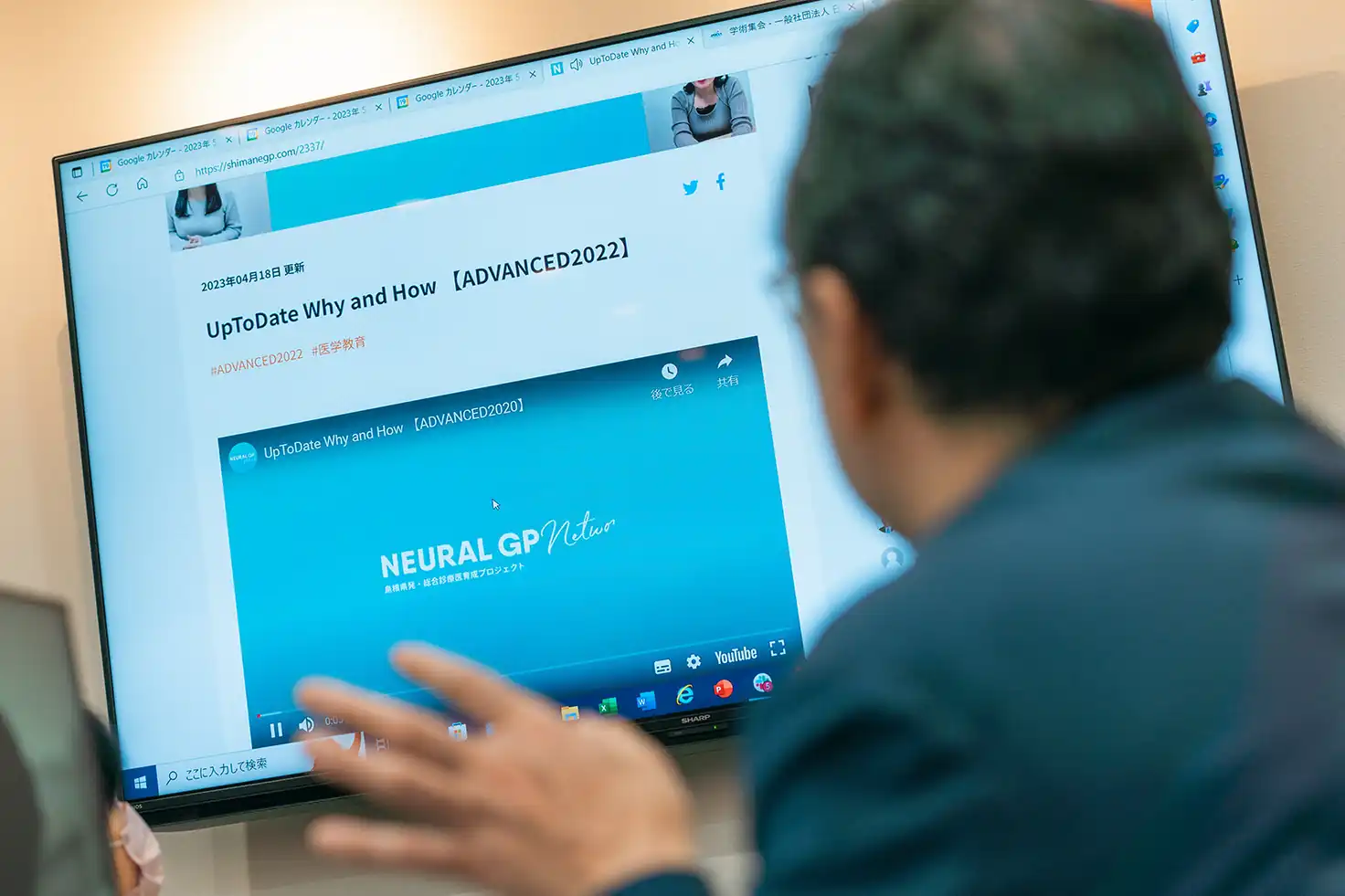
Point of design: Build a network to connect and train GPs who work in scattered locations. Created a system to regularly assist communication on daily duties, acceptance of medical interns, consultation, and planning. The organization continues to evolve projects to achieve its goals based on members’ self-management. Also, free videos explaining important points in a diagnosis are posted on its website.
- Manpower is the key to connect networks. How are students reacting?
Shiraishi Even after GP was categorized as the 19th specialist, the newest special field, students seemed to be skeptical about being a GP at the beginning because they had never seen any local GPs close to them in reality. However, we keep telling them confidently that being a GP is a wonderful job. The response from students is increasing every day, and some students are willing to visit rural areas at the border of the prefecture.
In the virtual network office, there are many doctors and students who, like Mr. Shiraishi, the center’s director, face the community with enthusiasm. In Part 2, he will tell us what kind of programs they actually implement and talk about where the health-care system is headed in the region and Japan.
In GOOD DESIGN TANBOU (= exploring), we will deliver interviews and introduce works based on a certain subject. This time, the theme is “future welfare.” Welfare means “happiness” and “abundance.” They desire to make future society better. What did they overcome toward achieving this goal? We will explore where their design focusing on the future started from.
NEURAL GP network
Shimane General Medicine Center
“Shimane General Medicine Center (alias)” was opened within the Faculty of Medicine, Shimane University at the end of FY2020 under a project to train GPs by the Ministry of Health, Labour and Welfare. It is a virtual office network for training GPs without hierarchy or boundaries between organizations that was launched by the center in order to establish “a neural general practice network that keeps evolving sustainably, not limited to community or university.” https://shimanegp.com
- Award details
- 2022 GOOD DESIGN GOLD AWARD “Shimane General Medicine Center NEURAL GP network” https://www.g-mark.org/en/gallery/winners/12099
- Producer
- Yoshihiko Shiraishi, Shimane General Medicine Center
- Director
- Takashi Watari, Shimane General Medicine Center
- Designer
- Junji Oishi, Ayako Sugimoto, Akane Shiba, MASUDA KOHBOH Inc.
Tomoko Ishiguro
Editor/writer
After working in the editorial department of “AXIS,” she became a freelancer. She writes, edits, and plans, with a focus on design and life culture. Her major editorial works include LIXIL BOOKLET series (book, LIXIL Publishing) and “Oishisa no Kagaku” (magazine, NTS Publishing).
Teppei Sasaki
Photographer
After university, he worked in a design office and became a freelance designer. At the same time, he relearned photography, which had been his hobby, and began working as a photographer. Based in Matsue City, Shimane, he now has much experience in photo shooting with local governments and private organizations.


